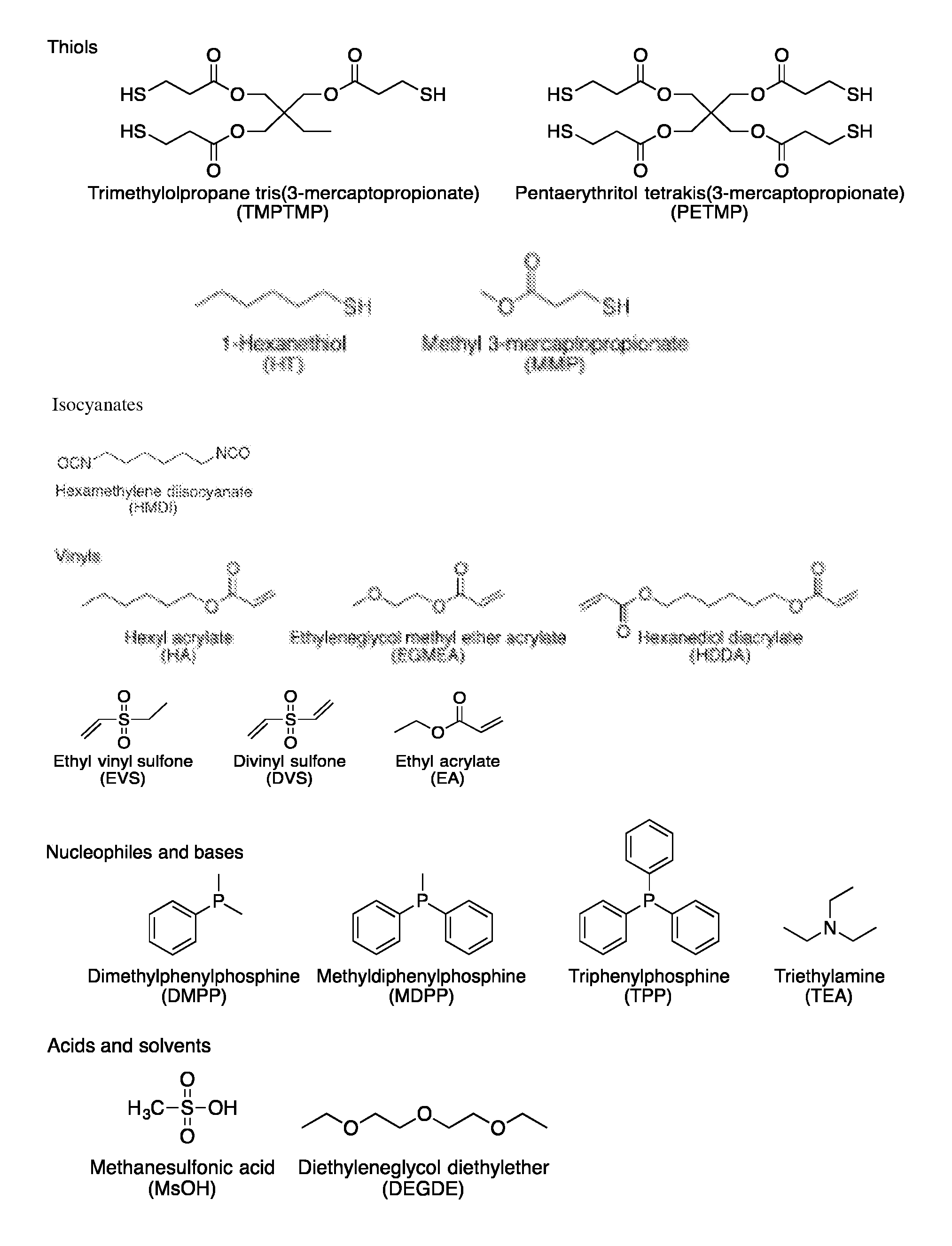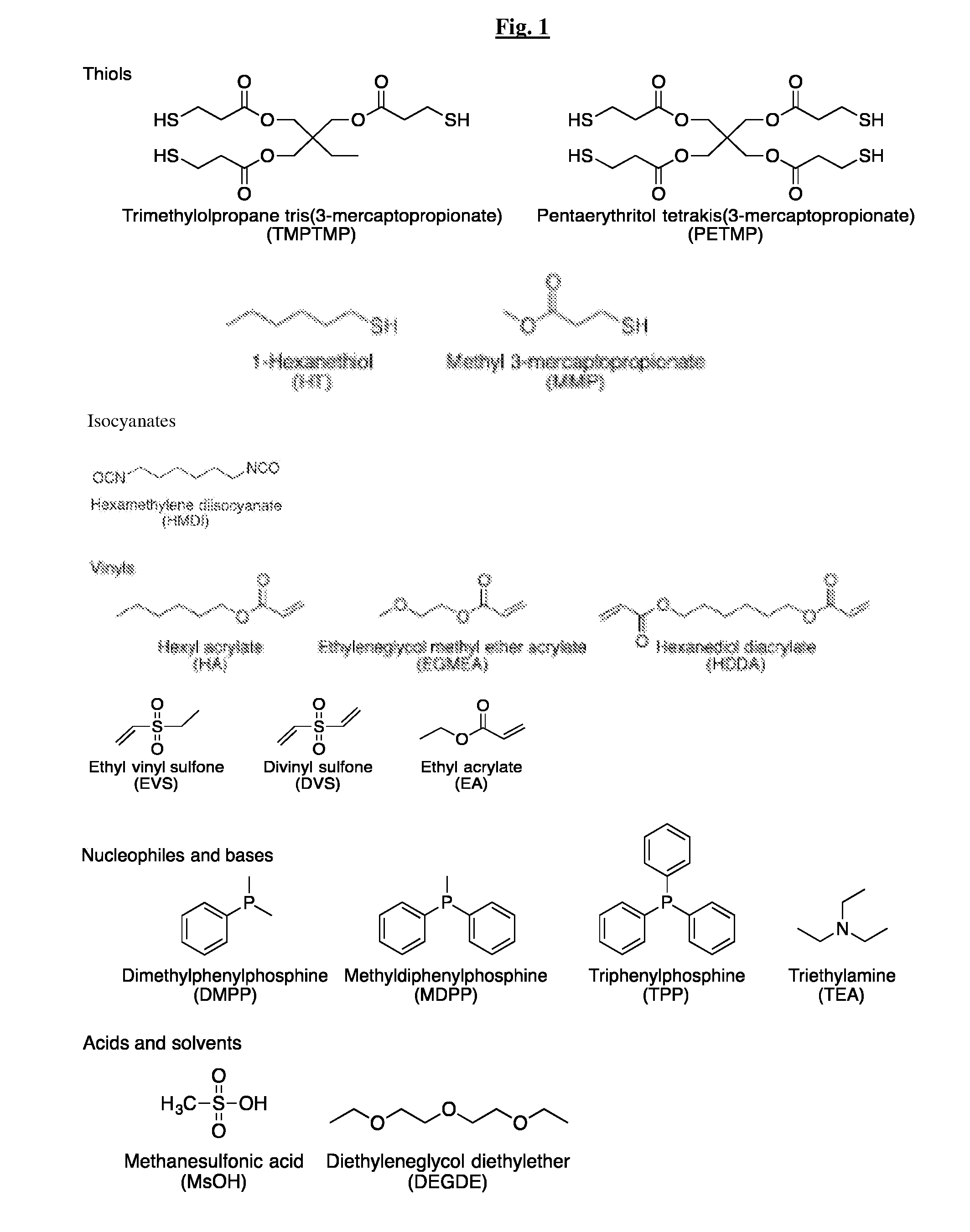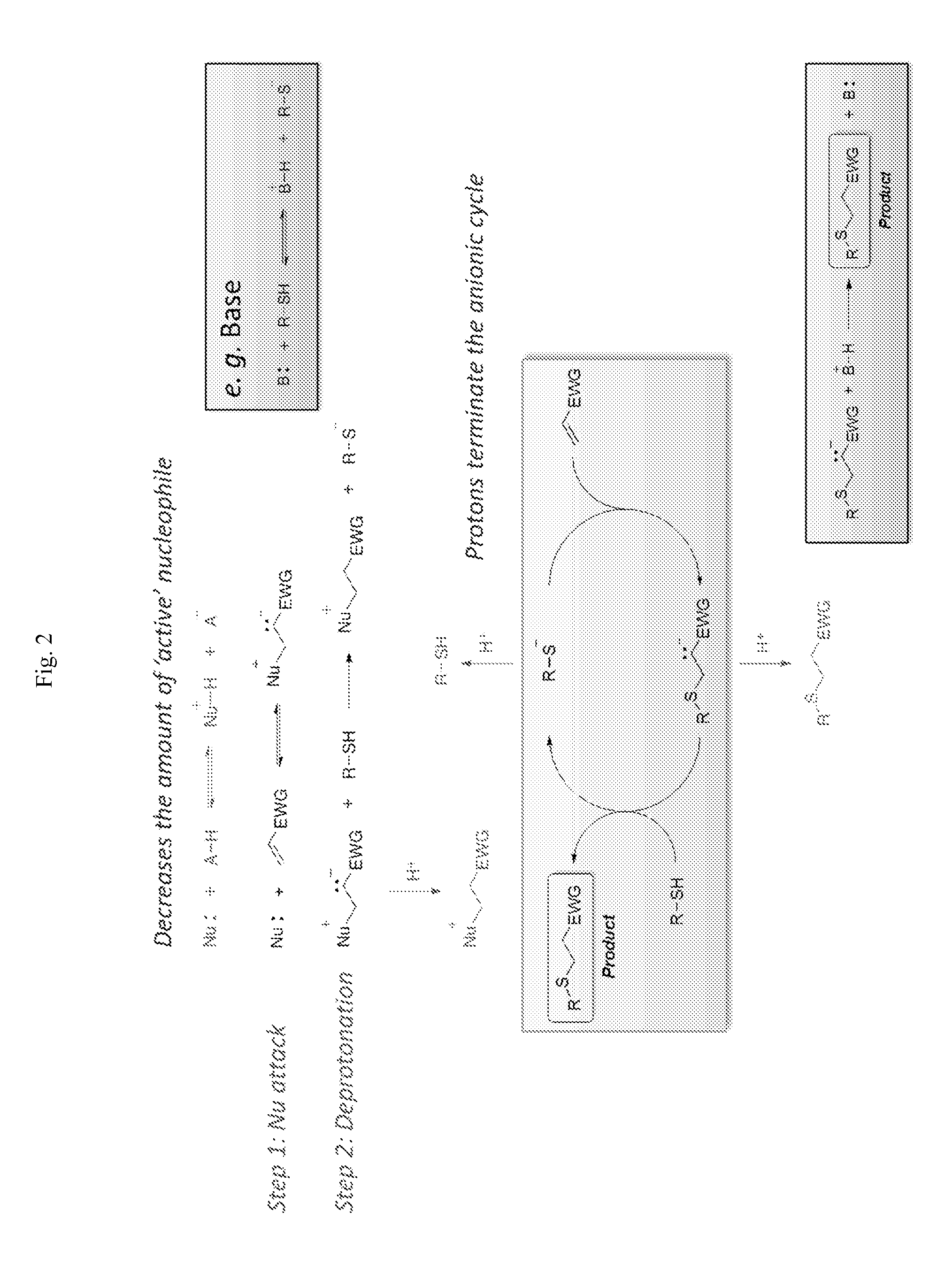Novel thiol-containing dual cure polymers and methods using same
a dual cure polymer and thiol technology, applied in the field of new thiol-containing dual cure polymers and methods, can solve the problems of limited work on the reactivity and selectivity of vinyl sulfone groups, reagents or catalysts, and incomplete understanding of the nucleophilic thiol-michael addition reaction pathway
- Summary
- Abstract
- Description
- Claims
- Application Information
AI Technical Summary
Benefits of technology
Problems solved by technology
Method used
Image
Examples
example 1
Thiol-Vinyl Sulfone Systems
[0157]Thiol-vinyl sulfone systems were formulated to study the reactivity of thiols and vinyl sulfones in the Michael addition reactions. Vinyl sulfone is known to be a highly activated vinyl and thus very reactive to thiol-Michael addition reactions. However, establishing the relative reactivity of a vinyl sulfone compared to other vinyls is of a particular interest since the high reactivity of either one would be advantageous for developing orthogonal or nearly orthogonal reaction systems that have several functional groups present within a reacting system.
[0158]The relative reactivity of a vinyl sulfone, ethyl vinyl sulfone (EVS), and an acrylate, hexyl acrylate (HA), in a thiol-Michael addition reaction was investigated. The reactions were performed in neat conditions with a stoichiometry of thiol to vinyl of 1 to 1. The general scheme of this reaction is described in Scheme 1.
[0159]Two thiols, hexanethiol (HT) and methyl 3-mercaptopropionate (MMP), an...
example 2
Temporal Control of Thiol-Click Chemistry
[0176]As discussed elsewhere herein, the nucleophile mediated thiol-Michael addition reaction has an induction time, as evidenced by using low nucleophile concentration. Also, a presence of protic species showed a large impact on reaction kinetics and slowed down or even stopped the reaction. In one embodiment, it should be possible to control the duration of an induction time by using a combination of nucleophile mediated mechanism and a proton inhibition by using appropriate concentrations of each species.
[0177]Firstly, a reaction between trimethylolpropane tetrakis(3-mercapto propionate) (TMPTMP) and ethyl vinyl sulfone (EVS) was chosen to test this hypothesis. Initial studies with dimethylphenylphosphine (DMPP, pK,=6) and methyldiphenylphosphine (MDPP, pKa=4) as nucleophilic species, with methanesulfonic acid (MsOH, pKa=−2) as an acid reagent lead to almost no control of the reaction, either instantaneous reaction or no observable reactio...
example 3
PETMP / HMDI / DVS Ternary Systems
[0184]The conversions at room temperature for ternary systems composed of tetrathiol, DVS and HMDI were investigated, in terms of maximum conversions and induction times (FIG. 42). Conversion at room temperature increased with the amount of HMDI in the system. Further, induction time increased with decreasing amount of co-initiator (DVS). Further, thiol-isocyanate reaction preceded thiol-vinyl sulfone reaction in all systems, at 80% isocyanate conversion there was less than 10% vinyl sulfone conversion. The studies indicated that the kinetics of thiol-isocyanate-vinyl sulfone crosslinking reaction may be easily controlled by the amount of TPP / MsOH ratio / content as well as co-initiator (DVS) concentration.
[0185]The shrinkage stress and shrinkage stress-Tg were also monitored (FIG. 43). To achieve full conversions the samples were heated up for 3-5 min at 60-70° C. The results suggest that at full conversions shrinkage stress shows linear dependence with ...
PUM
| Property | Measurement | Unit |
|---|---|---|
| Tg | aaaaa | aaaaa |
| Abbe numbers | aaaaa | aaaaa |
| Abbe numbers | aaaaa | aaaaa |
Abstract
Description
Claims
Application Information
 Login to View More
Login to View More - R&D
- Intellectual Property
- Life Sciences
- Materials
- Tech Scout
- Unparalleled Data Quality
- Higher Quality Content
- 60% Fewer Hallucinations
Browse by: Latest US Patents, China's latest patents, Technical Efficacy Thesaurus, Application Domain, Technology Topic, Popular Technical Reports.
© 2025 PatSnap. All rights reserved.Legal|Privacy policy|Modern Slavery Act Transparency Statement|Sitemap|About US| Contact US: help@patsnap.com



